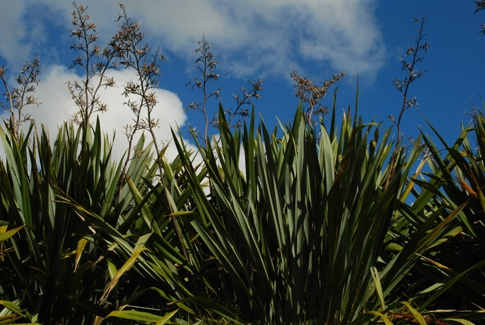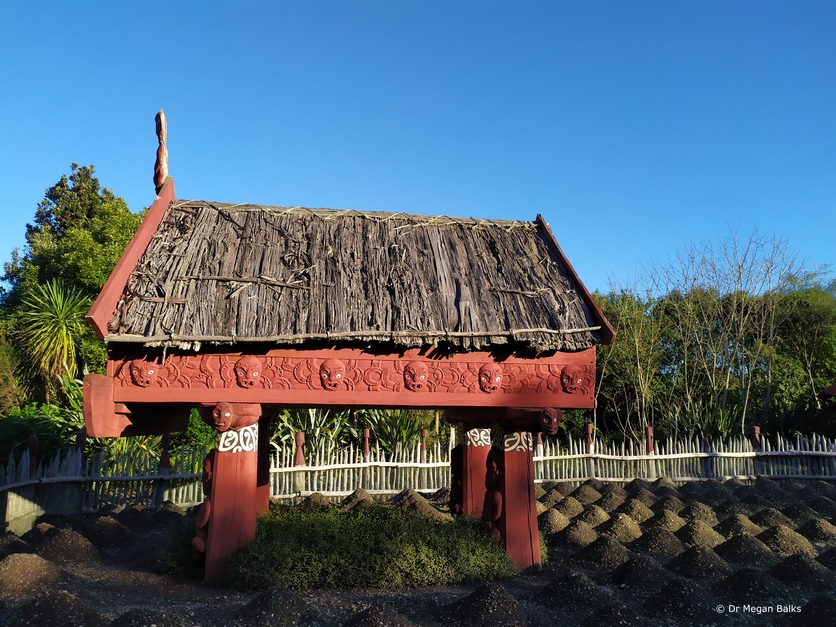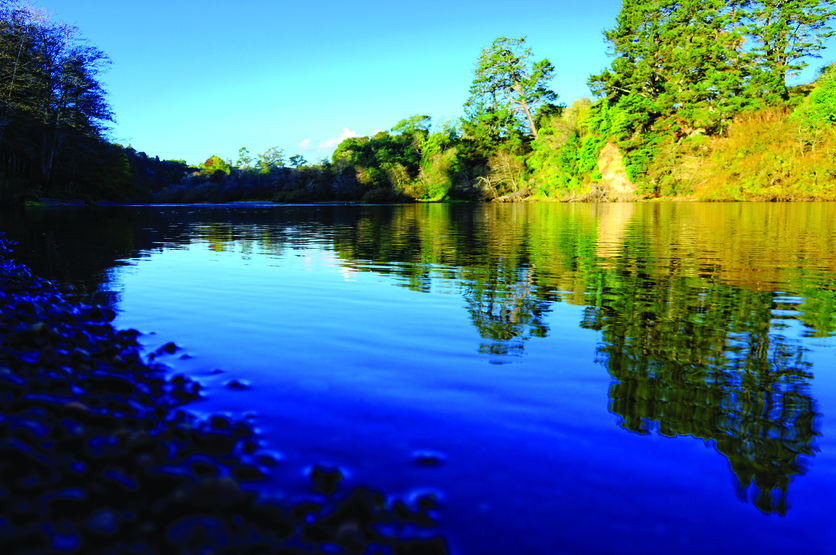Teachers often ask what Māori content is available on the Science Learning Hub. We have a wide range of resources including articles, teaching and learning activities and videos. The Hub also has a small range of resources that have been translated into te reo Māori, there is a clear link on these resources that allows the user to swap between te reo Māori and English.
Index
- Ahi pepe MothNet – an introduction
- Connected articles
- Estuaries
- Flight mythology – Māori kite
- Harakeke
- Impacts of climate change
- Integration of Māori and western knowledge
- Investigating middens
- Kaimoana
- Kiwi Kai
- Matariki
- Māori measurement
- Māori soil science
- Ngā rākau ❘ Trees
- Ngā Hekaheka o Aotearoa fungi resources
- Navigating without instruments – introduction
- Participatory Science Platform projects
- Pōhā
- Professional learning development webinars
- Project Matāuranga
- Rongoā Māori
- Taewa (Māori potatoes) – introduction
- Tātai arorangi – astronomical knowledge
- Tōku awa koiora – introduction
Ahi pepe MothNet – an introduction
Scientists from Manaaki Whenua – Landcare Research and tamariki of Te Kura Kaupapa Māori o Ōtepoti are working together to learn about and protect our native moth species. The Ahi Pepe MothNet project created the Puka Whakamārama o Te Pepe Nui – Beginners’ Guide to Macro Moths. The resource tells the story from a Māori perspective – five whakataukī (legends) about moths and their life cycles form the core of te reo Māori guides. The whakataukī provide context and purpose for the project and the science within it.
Connected articles
The Connected articles below feature Māori content.
In Whakaotirangi and her kete of kūmara, learn how Tainui ancestor Whakaotirangi first brought kūmara and other plants to Aotearoa and the techniques she used to plant, grow and store them.
In The science of rongoā, read about the research by high school student Chris Ryan who looked into the medicinal properties of kawakawa.
Te tapa ingoa – explore how early Māori went about naming and grouping the plants and animals they found around them.
Estuaries
Estuaries are productive food gardens. Spiritual and cultural dimensions gave Māori insight into the need to protect and care for their food baskets, as explained in Valuing estuaries. Videos explain the concepts of kaitiakitanga and mātauranga Māori. The activity Estuaries – a Māori perspective uses legend and te reo Māori to explore kaitiakitanga.
Flight mythology – Māori kites
Early accounts of flight ideas are explored in this article. One of these is the Māori kite – a connector between the Earth and the heavens. Ideas about science are often first depicted in mythology as people sought to explain their observations of the natural world. Discussion of these ideas can build students’ understanding about science as a knowledge system.
Harakeke
Explore harakeke under the microscope. Use it to learn and practise observation skills.
Impacts of climate change
Climate change threatens the loss of culturally significant land, taonga species and resources affecting the perpetuity of mātauranga and tikanga Māori. Māori have many tools for tracking changes to te taiao. Find out how this is helping our understanding of climate change in Aotearoa in this article and this Connected journal article.
Integration of Māori and western knowledge
Māori knowledge and methods are increasingly being incorporated into New Zealand’s conservation practice. Meet researcher Dr Priscilla Wehi who is applying mātauranga Māori principles and knowledge to her research into Aotearoa New Zealand’s ecological past. Amber McEwan is researching whether mātauranga Māori might help save New Zealand’s freshwater mussels.
Indigenous knowledge is increasingly valued, but to fully respect it we need to decolonise science – find out more in this article.
Investigating middens
Using this activity and the article Middens helps students understand how scientists gather and interpret data and use evidence to develop scientific ideas about how earlier people in New Zealand lived and kept healthy. The activity also allows opportunity to critique the validity of the evidence the students put together, thus incorporating a range of Nature of Science capabilities.
Kaimoana
Students could use this article to examine socio-scientific issues affecting the marine environment (the Nature of Science strand of the curriculum). The article describes how concerns of local iwi about the effects on kaimoana of the oil spill and debris resulting from the Rena grounding (2011) led to effective collaborative research. The Kaimoana in the Hauraki Gulf article highlights concerns for iwi living around the Hauraki Gulf about the discovery of tetrodotoxin (TTX) in the grey side-gilled sea slug. It could be used to explore how science ideas are communicated and often link scientific knowledge to everyday decisions and actions (Nature of Science strand).
Kiwi Kai
Kiwi Kai is a browser-based virtual farm that explores the relationships between healthy environments, kai, people and communities. The article Te ao Māori concepts within Kiwi Kai ❘ Ngā ariā o Te Ao Māori kei roto i te kēmu Kiwi Kai explores concepts such as mana atua, mauri and te mana o te taiao and actions we can take to support Papatūānuku.
Māori measurement
Due to the geographical isolation of New Zealand, pre-European Māori had little contact with neighbouring islands. Trade and commerce were internally based so there was no need for a precise measuring system. However, activities such as wharenui construction, waka making, woodcarving and weaving did require a high degree of precision. This precision was achieved more through the eye of the operator than by reference to a defined standard.
Matariki
Matariki is the Māori name for the star cluster known as the Pleiades. It signals the Māori new year. The article Matariki star cluster provides background information about the stars, the Māori lunar calendar and how to spot the Matariki cluster. Follow it up with the activity Naming the whetū in te kāhui o Matariki.
Environment Aotearoa 2022 uses Te Kāhui o Matariki as the guiding framework to explore the health of te taiao, the environment. This introductory article explains the framework and has links to the nine whetū and their associated environmental domains and supporting activities.
Flight mythology explores Māori kitemaking and kite-flying, a popular part of Matariki celebrations. Constellations in the night sky is a literacy activity in which students learn about star constellations and cultural legends.
Māori soil science
When Māori first arrived in Aotearoa/New Zealand, they brought with them knowledge of soils. Like all soil scientists, they used observation and experimentation to gather data and develop processes regarding land use. Find out more in this article about how Māori modified soils to promote kumara growth.
Ngā Hekaheka o Aotearoa fungi resources
The Science Learning Hub has a number of resources adapted from the bilingual booklet Ngā Hekaheka o Aotearoa by mycologist Dr Peter Buchanan with educator Dr Georgina Stewart and translator Hēni Jacob.
The resources on fungi are from a Māori world view and are aimed at students in Years 7-10. The resources, available in English and te reo Māori, describe the form, function and importance of fungi including examples of Māori knowledge and uses of fungi. It allows students to draw a distinction between fungi, plants and where they sit in the eco-system.
Links to all the resources can be found in Ngā Hekaheka o Aotearoa kuputaka.
Navigating without instruments – introduction
Navigator Jack Thatcher describes his waka hourua voyage from New Zealand to Rapanui (Easter Island) and back. The resources help develop the science capabilities of using evidence to support science ideas and interpreting representations to communicate in science. Navigators use tātai arorangi, which features in the articles Te ao Māori – space whakapapa and SMART – Māori astronomy.
Ngā rākau ❘ Trees
A collection of resources in a bi-lingual format, extensively illustrated with images and diagrams – in both te reo Māori and English with a button allowing you to switch between the two. Included are te reo Māori-only Word documents for kaiako to download and adapt as required.
- Ngā rākau ❘ Trees – introductory article
- He aha hoki tērā rākau? ❘ What kind of tree is that? – pedagogy and planning
- Te haenga me te ruinga o te kākano ❘ Pollination and seed dispersal
- Ngā kākano ❘ Seeds
- Ngā rau o te rākau ❘ Tree leaves
- He pūnaha whakarōpū ❘ Classifying and identifying plants
Participatory Science Platform projects
Participatory Science Platform projects are collaborative, community projects that bring together local students and scientists or technologists on research investigating a locally-important question or problem. Students at Aorere College helped restore mauri to the Oruarangi Stream after a devastating dye spill. Oruarangi Stream holds special significance to local iwi. Their papakāinga is Auckland’s oldest settlement. This interactive timeline highlights how the students engaged with the nature of science as they investigated and restored the stream.
Pōhā
Pōhā are bags made from rimurapa, a species of bull kelp, and are strengthened and supported by kete and tōtara bark. Pōhā are used to preserve tītī, keeping them edible for up to two years. This ancient technology is still used by some families in Te Waipounamu and Rakiura, keeping the mahi alive. The article includes links to video footage from Ngāi Tahu, with subtitles in te reo Māori.
Professional learning development webinars
Opportunities for te reo Māori shares ideas and resources for teachers wanting to increase the amount of te reo Māori in their classrooms.
Mātauranga Māori unpacks important ideas teachers need to be aware of when including this in their classroom and is full of ideas and inspiration.
Mātauranga and the Living World explores mātauranga resources related to the Living World.
Kaitiakitanga with Tame Malcolm shares Tame's understanding of kaitiakitanga.
Te Kāhui o Matariki and the environment unpacks ideas connected to Ministry for the Environment Environment Aotearoa 2022 report.
Whakanui pūtaiao – two primary teachers share their views on achievable, practical ideas from their classroom experiences, including resources to support the growth of mātauranga pūtaiao in your science programme.
Te Repo – wetlands as a context for learning investigates repo ecosystems and highlights how science and te ao Māori work together to understand, protect and restore these special places.
Local curriculum, mātauranga and science this webinar provides insights and resources on how to get started on providing meaningful contexts for embedding mātauranga into your programme.
Project Matāuranga
Project Mātauranga is a television series that investigates Māori world views and methodologies within the scientific community and looks at their practical applications.
Mātauranga Māori is a modern term that refers to Māori knowledge and Māori ways of doing things. Discover articles and videos on sea sponges and rongoā, kaitiaki of the kiwi, sea cucumber for export, kauri dieback and ngahere ecosystems, restoration of harakeke and pare.
Rongoā Māori
This article talks about rongoā – the Māori term for medicines that are produced from native plants. Some of these plants and their medicinal properties are identified. Students’ understanding about science as a knowledge system can be developed through discussion of the information from the Rongoā Māori article.
In the activity Using rongoā Māori students learn about rongoā Māori (medicines that are produced from native plants in New Zealand) using a silent card game. This activity helps develop the science capabilities Using Evidence and Engage with Science as students learn about medical problems that can be solved with native plants.
High school student Chris Ryan researched the medicinal properties of kawakawa, read about it in this Connected journal article.
Taewa (Māori potatoes) – introduction
Taewa are traditional potato varieties grown by early Māori settlers in New Zealand. Traditional varieties of taewa have been preserved by Māori and passed down through generations so they’re still available today in their original form. Māori treasure them as a link to their early ancestors. Find out how researchers are now developing unique food products from taewa.
Tātai arorangi – astronomical knowledge
Tātai arorangi, Māori astronomical knowledge, is fundamental to te ao Māori. It forms a significant pillar of whakapapa stretching back to the beginnings of the universe. The Society of Māori Astronomy Research and Traditions (SMART) is revitalising this knowledge – sharing the past to empower the future. SMART chairperson Dr Pauline Harris features in our Aotearoa New Zealand in space resources.
Tāwhaki is an aerospace project that connects whenua with tuarangi (outer space). The name Tāwhaki acknowledges the ancestral connections between Ngāi Tahu and the demi-god Tāwhaki who sought celestial knowledge.
Tōku awa koiora – introduction
Kaitiaki are working to restore and protect the health and wellbeing of the Waikato River. Many of the principles apply to other New Zealand rivers too. The resources help students understand that scientists ask questions about our world and that open-mindedness is important.
It’s pretty cool because it’s native to us and something we need to protect and something that we should learn about and we should know. We should know about our history and what it was like back in the Māori days. We should know about our special creatures.
Student Emily on the benefits of learning about the science of a New Zealand species
The tentative nature of science knowledge
Exploring the links in this Nature of Science article Tenets of the nature of science provides ideas on the tentative nature of science knowledge shown in the science ideas about cockles.
Nature of science
To ensure teaching and learning develops students’ Nature of Science capability, identify the aspect they need to develop when planning the unit and select activities and resources that will build this. For example, the Investigating middens activity can be used to build Investigating in Science capability.
Activity ideas
Other activity ideas with links to Māori perspectives on using rahui to control a resource.
Another interesting activity to develop critiquing evidence capability is Kupe and modern voyaging.
Collection of related content
The Science Learning Hub team has curated a collection of resources related to opportunities for using te reo Māori. Login to make this collection part of your private collection, just click on the copy icon. You can then add additional content, notes and make other changes. Registering an account for the Science Learning Hubs is easy and free – sign up with your email address or Google account. Look for the Sign in button at the top of each page.
Useful links
See our Pinterest board that showcaswes science resources that look at research from a Māori world view and profiles that look closely at the mahi of Māori scientists.
Further ideas on building Nature of Science understanding and science capabilities can be found on the TKI website.
This video, Mataurangi Māori in modern day research, is a panel discussion with Dr Daniel Hikuroa, Dr Ocean Mercier, Dr Wayne Ngata and Arapata Hakiwai held in June 2017. They present their perspectives on the place of mātauranga Māori in contemporary research.
Evidence supports the teaching of Indigenous knowledge alongside sciences in the classroom, read more in Amanda Black, Jason M. Tylianakis, Teach Indigenous knowledge alongside science. Science 383, 592–594 (2024). DOI:10.1126/science.adi9606






